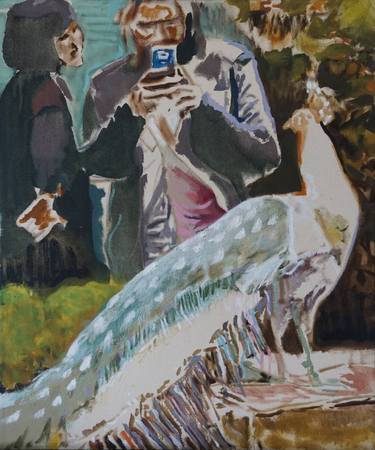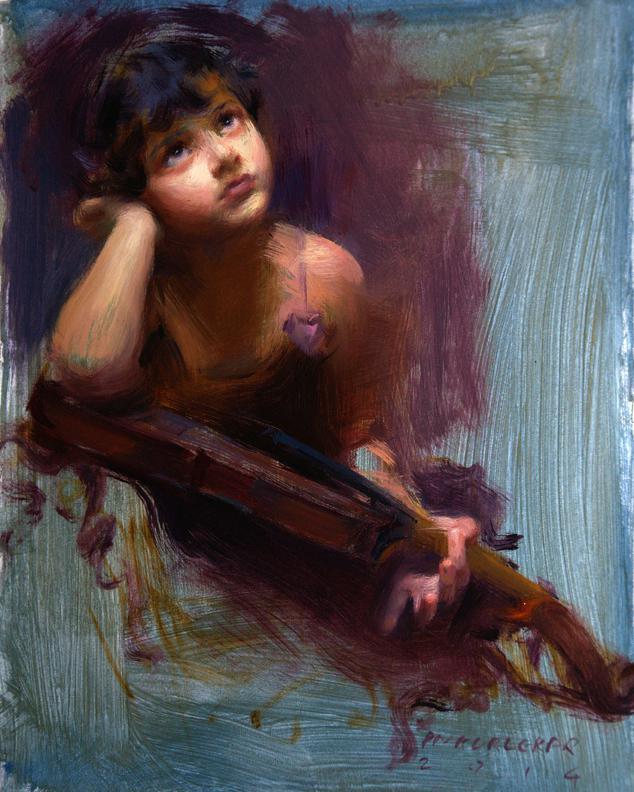Why Figurative Oil Painting Remains a Timeless Choice for Artists
Why Figurative Oil Painting Remains a Timeless Choice for Artists
Blog Article
The Function of Feeling and Expression in Metaphorical Oil Paint: An In-Depth Evaluation of Subject and Composition
The interaction of feeling and expression in metaphorical oil paint offers as an important lens through which one can take a look at the elaborate connection in between subject issue and make-up. Artists harness different methods, from color choice to brushstroke dynamics, to grow emotional resonance within their works.
Comprehending Emotion in Art
Feeling in art functions as an effective channel for expression, allowing musicians to communicate intricate sensations through their job. In figurative oil paint, this psychological depth is commonly portrayed via the depiction of the human number, recording the nuances of human experience. The option of subject issue, shade palette, and brushwork all add to the emotional vibration of an item.
Artists frequently draw upon personal experiences, social concerns, or global themes to evoke sensations in the visitor. A portrait may show susceptability, while a vibrant number in activity can signify freedom or turmoil. These emotional threads link the customer to the art work, cultivating a discussion that goes beyond the aesthetic tool.
In addition, the interaction in between light and darkness can intensify psychological strength, assisting the customer's stare and drawing attention to particular elements within the composition. Making use of texture in oil painting even more adds layers of complexity, inviting a responsive feedback that enhances the emotional experience. In general, understanding emotion in art is crucial for valuing the nuances that define metaphorical oil painting, as it changes mere depiction right into a profound exploration of the human problem.
Trick Components of Structure
In the realm of figurative oil paint, the structure acts as the underlying framework that arranges aesthetic aspects and enhances the psychological story. Crucial parts of structure include equilibrium, comparison, centerpiece, and rhythm, each adding to the overall influence of the art work.
Balance refers to the circulation of aesthetic weight within the painting, which can be attained via balanced or unbalanced arrangements. A healthy structure provides security, allowing the visitor to engage with the item sympathetically - figurative oil painting. Contrast, on the various other hand, involves comparing different aspects, such as light and dark or cozy and amazing colors, to assist the viewer's eye and stimulate emotional actions
The prime focus is critical, as it guides focus to the most substantial part of the paint, typically highlighting the emotional core of the story. With strategies like color saturation or positioning, musicians can emphasize this location efficiently. Rhythm pertains to the repetition of components, creating a feeling of activity and flow throughout the structure. By skillfully integrating these vital elements, artists can craft psychologically powerful and compelling figurative oil paintings that mesmerize and involve their audience.
Topic and Its Impact
Subject plays an essential function in metaphorical oil paint, as it not just offers as the foundation for the narrative however likewise forms the viewer's interpretation and psychological engagement with the artwork. The option of topic-- be it a solitary number, a team dynamic, or a thematic depiction-- straight influences the emotional environment communicated to the audience.

As an example, pictures commonly evoke individual connections, disclosing the ins and outs of human expression and character, while scenes depicting common activities can produce a sense of belonging or fond memories. Furthermore, the social and historical context of the topic enriches the customer's understanding, why not try these out prompting deeper representations on societal standards, values, and the human problem.
Various subjects also create varying levels of involvement; a remarkable problem depicted with numbers in tension may evoke feelings of anxiousness or compassion, while peaceful landscapes can conjure up tranquility and consideration. Inevitably, the influence of subject in metaphorical oil painting is profound, as it acts as an avenue for emotional vibration, assisting the viewer's response and interpretation, and cultivating a connection between the artwork and the onlooker. This interaction is vital for the effective interaction of the musician's intent.
Strategies for Stimulating Feelings
The effectiveness of figurative oil painting in communicating emotions is dramatically affected by the strategies used by the artist. One of the most important techniques is the use of color concept, where the critical option of hues can evoke particular emotional actions. Cozy shades, such as reds and oranges, typically generate feelings of enthusiasm or aggressiveness, while cooler tones like blues and environment-friendlies often tend to stimulate peace or unhappiness.
Another important technique is the manipulation of light and shadow, called chiaroscuro. This approach improves the three-dimensionality of figures, producing dramatic contrasts that can magnify emotional deepness. The positioning of light can lead viewers' emotions, highlighting specific components of the make-up.
Brushwork additionally plays a critical function; loose, expressive strokes can convey energy and spontaneity, whereas smoother strategies may suggest serenity or precision. Furthermore, the arrangement of subjects within the structure can influence emotional influence. Close distance can suggest affection, while distance might suggest seclusion.
Inevitably, the combination of these techniques makes it possible for artists to craft stories that resonate with the viewer, changing a mere aesthetic experience into an expressive emotional explanation trip. - figurative oil painting

Study of Notable Functions
Examining significant works of figurative oil paint discloses how numerous strategies are employed to evoke powerful emotions. One exemplary situation is Edvard Munch's "The Scream," where the altered number and swirling background communicate existential fear. Munch's usage of color-- deep blues and brilliant oranges-- magnifies the psychological influence, showcasing just how palette choices can shape customer experience.
One more considerable job is Pablo Picasso's "Les Demoiselles d'Avignon." Right here, fragmented kinds and bold brushstrokes show a troubled emotional landscape, challenging standard representations of the female number. Picasso's innovative structure not only captures the visitor's attention however likewise invites contemplation on themes of identity and sexuality.
Furthermore, Frida Kahlo's "Both Fridas" provides a poignant expedition of duality and self-identity. The different figures, linked by a common heart, exhibit Kahlo's emotional depth and individual story. figurative oil painting. Her precise attention to information and symbolic components serve to engage viewers on a natural level
These case studies emphasize the profound connection in between emotion and composition in metaphorical oil painting, revealing just how artists harness technique to connect intricate feelings and stories that reverberate across time and society.

Final Thought
To conclude, the interaction of emotion and expression in figurative oil paint substantially enhances the customer's experience and analysis of the artwork. Via a cautious option of subject and compositional strategies, musicians communicate extensive narratives that reverberate on both individual and universal levels. The application of color brushwork, chiaroscuro, and concept additional intensifies emotional depth, transforming each canvas right into an effective reflection of the complexities of the human experience.
In metaphorical oil paint, this psychological deepness is typically represented through the depiction of the human number, recording the nuances of human experience.Furthermore, the interaction in between light and darkness can amplify emotional intensity, assisting the visitor's gaze and drawing interest to specific aspects within the make-up. The usage of appearance in oil painting further adds layers of complexity, inviting a tactile action that improves the psychological experience.The focal factor is critical, as it guides focus to Read Full Article the most substantial component of the paint, usually highlighting the psychological core of the story. Inevitably, the influence of subject issue in metaphorical oil paint is extensive, as it serves as a channel for emotional resonance, guiding the audience's response and analysis, and cultivating a link in between the art work and the onlooker.
Report this page